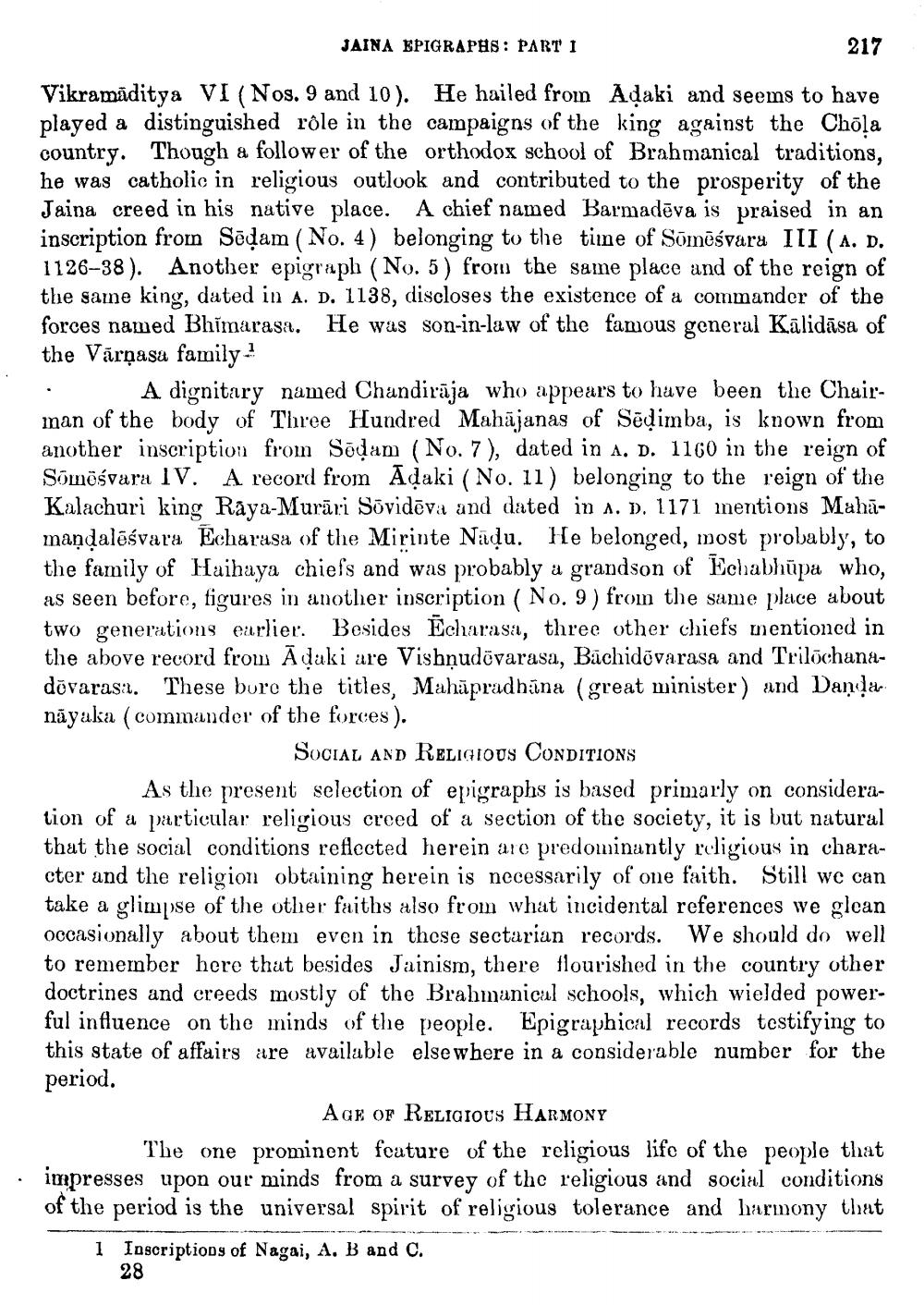________________
JAINA EPIGRAPHS: PART I
217
Vikramaditya VI (Nos. 9 and 10). He hailed from Adaki and seems to have played a distinguished rôle in the campaigns of the king against the Chola country. Though a follower of the orthodox school of Brahmanical traditions, he was catholic in religious outlook and contributed to the prosperity of the Jaina creed in his native place. A chief named Barmadēva is praised in an inscription from Sēdam (No. 4) belonging to the time of Sõmēśvara III (A. D. 1126-38). Another epigraph (No. 5) from the same place and of the reign of the same king, dated in A. D. 1138, discloses the existence of a commander of the forces named Bhimarasa. He was son-in-law of the famous general Kālidāsa of the Vārņasa family! • A dignitary named Chandirāja who appears to have been the Chairman of the body of Three Hundred Mahājanas of Sēdimba, is known from another inscription from Södam (No. 7), dated in a. D. 1160 in the reign of Somośvara IV. A record from Adaki (No. 11) belonging to the reign of the Kalachuri king Raya-Murāri Sõvidēva and dated in s. 1). 1171 inentions Mahāmaņdalāśvara Écharasa of the Mirinte Nadu. He belonged, most probably, to the family of Haihaya chiefs and was probably a grandson of Echabhūpa who, as seen before, figures in another inscription ( No. 9 ) from the same place about two generations earlier. Besides Écharasa, three other chiefs mentioned in
ecord from Ādaki are Vishnudövarasa, Bachidõvarasa and Trilochanadövaraştı. These bure the titles, Mahāpradhāna (great minister) and Danda. nāyaka (commander of the forces).
Social and Religious Conditions As the present selection of epigraphs is based primarly on consideration of a particular religious creed of a section of the society, it is but natural that the social conditions reflected herein are predominantly religious in character and the religion obtaining herein is necessarily of one faith. Still we can take a glimpse of the other faiths also from what incidental references we glean occasionally about them even in these sectarian records. We should do well to remember here that besides Jainism, there flourished in the country other doctrines and creeds mostly of the Brahmanical schools, which wielded powerful influence on the minds of the people. Epigraphical records testifying to this state of affairs are available else where in a considerable number for the period.
Age of Religious HARMONY The one prominent feature of the religious life of the people that impresses upon our minds from a survey of the religious and social conditions of the period is the universal spirit of religious tolerance and harmony thint
1 Inscriptions of Nagai, A. B and C.
28




